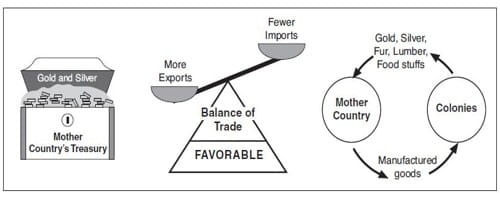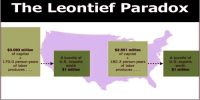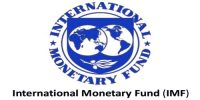Mercantilism theory of International Trade
International trade is the exchange of capital, goods, and services across international borders or territories, which could involve the activities of the government and individual. It is the exchange of goods and services across country borders. This theory was developed in the sixteenth century and is measured to be the oldest theory of International Trade.
According to this theory, “a country’s wealth could be determined by the amount of it’s gold and silver holdings.”
Mercantilism was one of the earliest efforts to develop an economic theory. This theory stated that a country’s wealth was determined by the amount of it’s gold and silver holdings. In its simplest sense, mercantilists believed that a country should increase its holdings of gold and silver by promoting exports and discouraging imports. It is connected with policies which confine imports, increase stocks of gold and protects domestic industries. Example: Under the British Empire, India was controlled in buying from home industries and was forced to trade in salt from the UK. Protests against this salt tax led to the ‘Salt tax revolt’ led by Gandhi.
It was the dominant theory in Europe between 1500 and 1800. This method subjugated Western European economic thought and policies from the sixteenth to the late eighteenth centuries. It was believed national potency could be maximized by limiting imports via tariffs and maximizing exports. In other words, if people in other countries buy more from you (exports) than they sell to you (imports), then they have to pay you the difference in gold and silver. The objective of each country was to have a trade surplus, or a situation where the value of exports is greater than the value of imports, and to avoid a trade deficit, or a situation where the value of imports is greater than the value of exports. There are also many myths adjoining mercantilism (e.g. it’s about signpost gold, it’s alongside the free market, it results in colonialism).

Fig: Mercantilism Theory of International Trade
It has 2 main goals:
- Make the nation as rich as possible (economic dimension).
- Make the nation as powerful as possible (political dimension).
Mercantilism is an economic theory that advocates government guideline of international trade to produce prosperity and support countrywide power. Adam Smith ended mercantilism with his 1776 publication of “The Wealth of Nations.” Even today this theory is being followed to some extent by export economies like Germany, Japan, and Singapore etc.
Mercantilism involves:
- Restrictions on imports – tariff barriers, quotas or non-tariff barriers.
- Accumulation of foreign currency reserves, plus gold and silver reserves.
- Government investment in research and development to exploit the effectiveness and ability of the domestic industry.
- Allowing copyright/intellectual theft from foreign companies.
- Limiting wages and consumption of the working classes.












